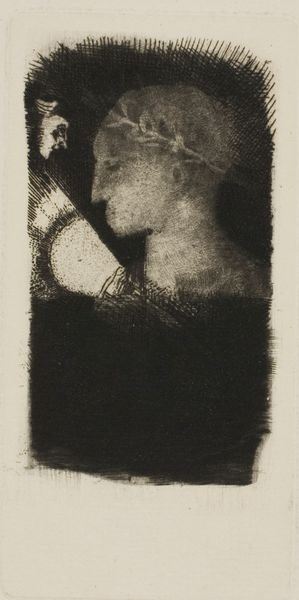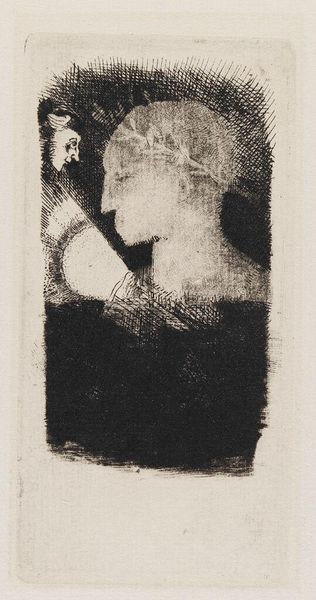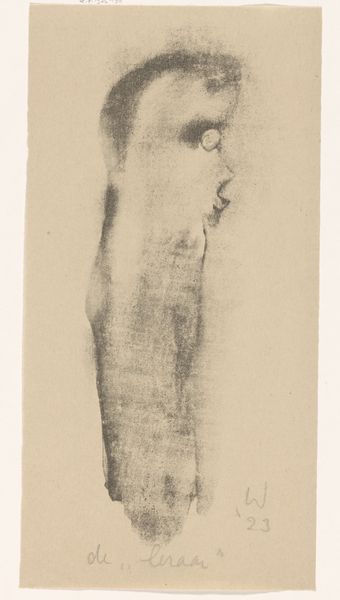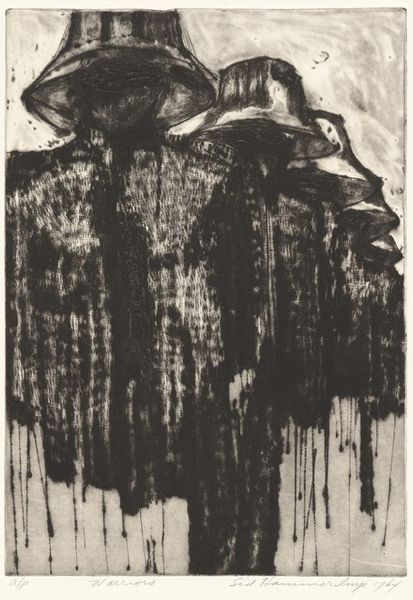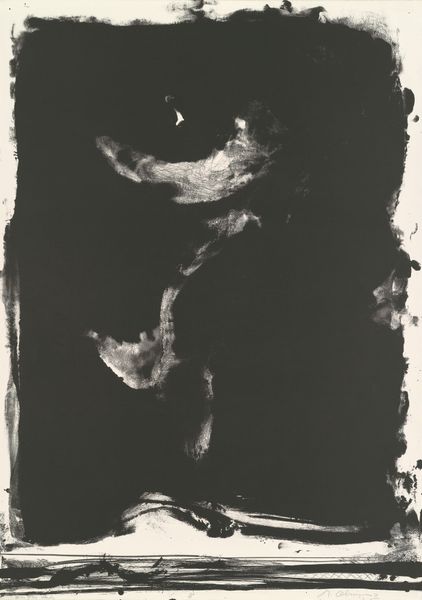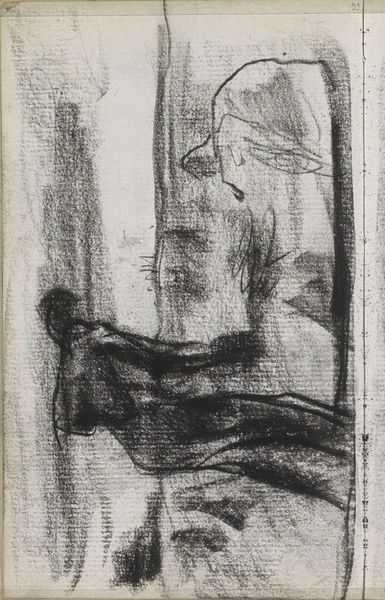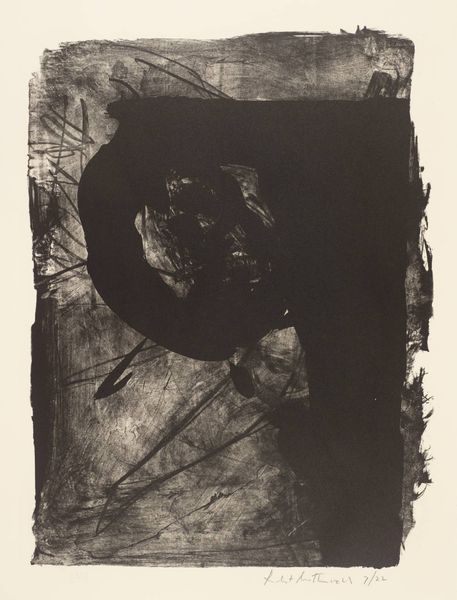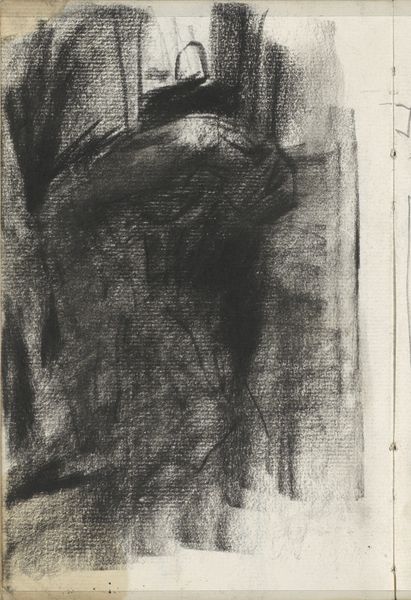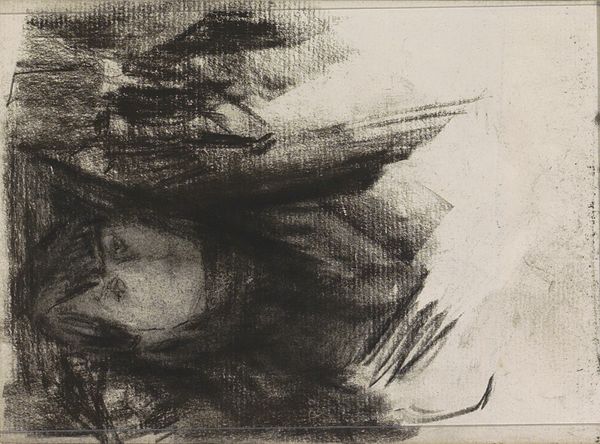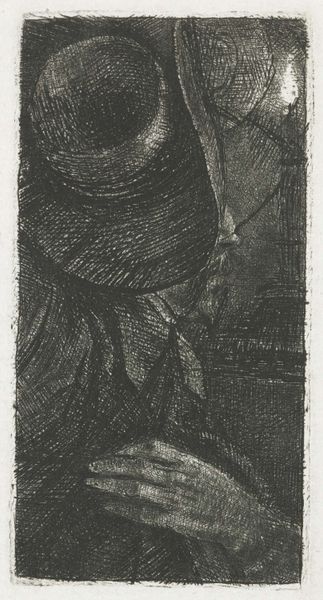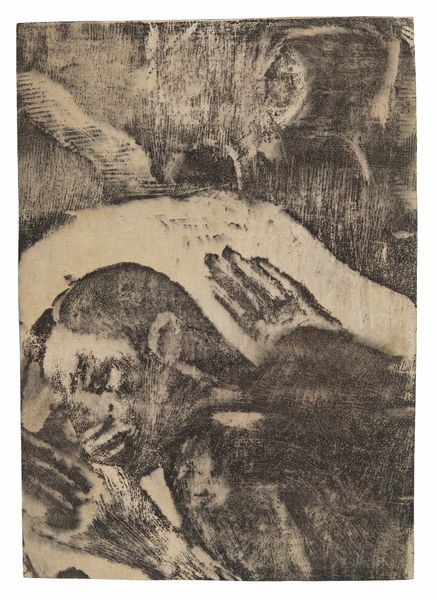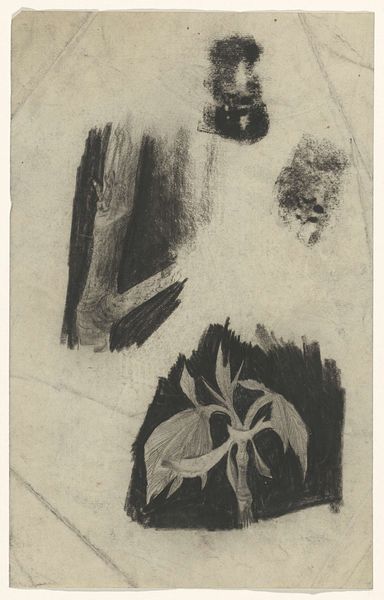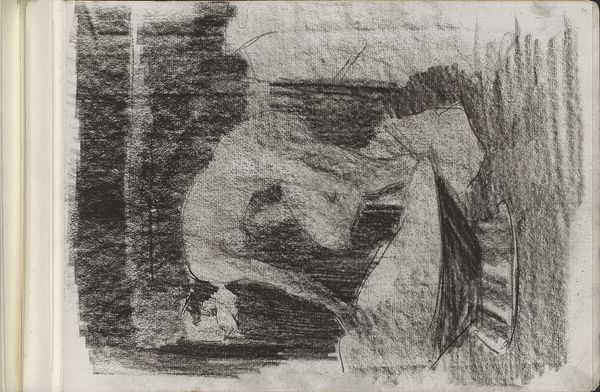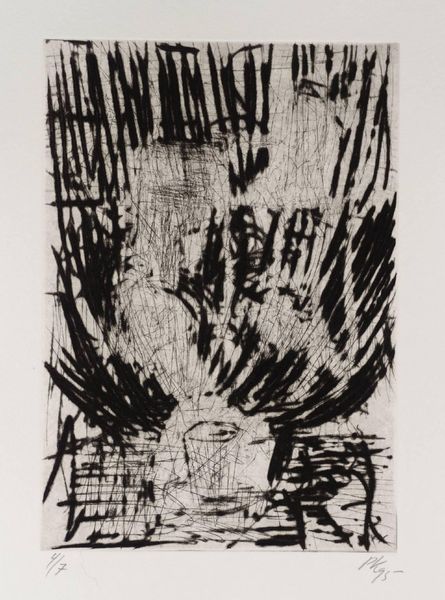
drawing, print, etching, paper, ink
#
portrait
#
drawing
# print
#
etching
#
paper
#
ink
#
france
#
symbolism
Dimensions: 90 × 45 mm (image); 122 × 60 mm (plate); 353 × 245 mm (sheet)
Copyright: Public Domain
Curator: Standing before us is "Adverse Glory," an etching by the French symbolist artist Odilon Redon, created in 1886. Editor: Right, and my first thought is, wow, it’s moody. Like a dream you can't quite shake. This portrait has such a weight of melancholy. It’s as if the ink itself is sighing. Curator: Redon's work frequently engages with themes of isolation and internal struggle, often through the lens of mythology and the subconscious. This particular print reflects those preoccupations. I believe the artist challenges conventional notions of glory. We might think of gender studies and queer theory, to consider its departure from stereotypical representation and power structures. Editor: Interesting, yes. What gets me is the halo or wreath – I wonder what it means to crown sorrow like that? There's a tiny ghostly figure, isn't there? Almost forgotten near the top-left. Is it an echo? A fading memory? Makes you wonder about the price of fame or the emptiness within. Curator: I appreciate your poetic read of the image. It also reminds me of Baudelaire and the concept of the 'flâneur,' navigating a rapidly changing Parisian society, detached and contemplative, struggling to make sense of urban alienation. We can situate the drawing within the complex framework of French symbolism. Editor: I keep wanting to dive into the inky shadows; like looking for a forgotten photograph and stirring things up again. And I mean the technical stuff, too. The stark black and white... how does it give this figure its silent power? Is it glory, as the title says? Or is it something sadder? Something we feel, deep down, whether we're kings or nobody at all. Curator: Absolutely. Redon utilizes these technical elements precisely to evoke that emotional response. We are challenged to critically evaluate our own assumptions. He compels us to think deeply about themes relevant to society, philosophy, and even politics. Editor: I leave this with more questions than answers. Thank you, Redon, for the beautiful unease. Curator: It prompts us to recognize the enduring impact of Redon's commentary on society. Art can ignite dialogue across time and contexts.
Comments
No comments
Be the first to comment and join the conversation on the ultimate creative platform.
